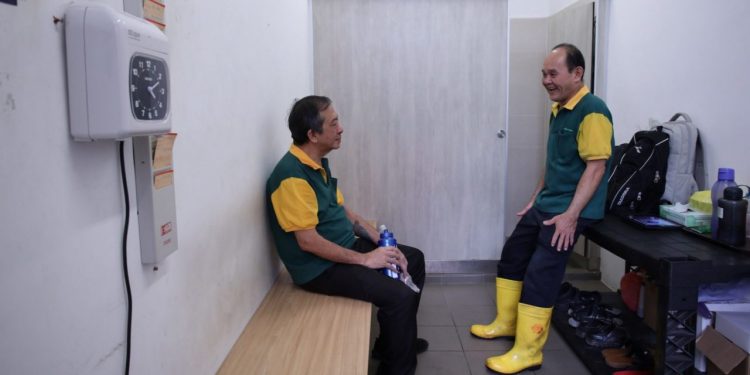This is a blog post by NTUC Assistant Secretary-General, Zainal Sapari. Any extracts should be attributed back to the author. 20 March 2019.
Imagine you go to work every day. When it’s time for your lunch break, there is no proper place to have your meal. You resort to having your lunch in any space you can find, like a stairwell, carpark or storage area.
Imagine you are halfway through your eight-hour shift and you want a place to rest before you continue your work day. But the area provided to you is ill-equipped, poorly ventilated or even worse, located next to a bin centre.
Would you be happy?
If not, why would this be acceptable for our cleaners, security officers and landscape maintenance employees?
Everyone, regardless of whether you are the Government, an employer, a service buyer or a concerned citizen, must realise that we all have a part to play in uplifting the lives of our low-wage workers.
A cause that all of us could be a part of is ensuring that our companies provide proper rest areas for outsourced workers such as cleaners, security officers and landscape maintenance employees working in our building premises. These workers put in effort and hard work performing their duties, and the fruits of their labour result in a better environment – one which is clean, safe and secure – for everyone at the site. Surely, these workers deserve the dignity of having proper rest areas so that they can carry on doing their work more productively.
Most companies provide good, proper rest areas for their permanent employees. Unfortunately, the provision of rest areas by service buyers or building owners for their cleaners, security officers and landscape maintenance workers is uncommon. Many of these outsourced service workers have no choice but to accept whatever nook or corner, albeit undesirable, as their rest areas.
The Good, the Bad, and the Ugly
Fortunately, there are some kind folks that keep a lookout for the cleaners, security officers and landscape maintenance workers working at their premises. Our union visits to worksites have uncovered many good rest areas.
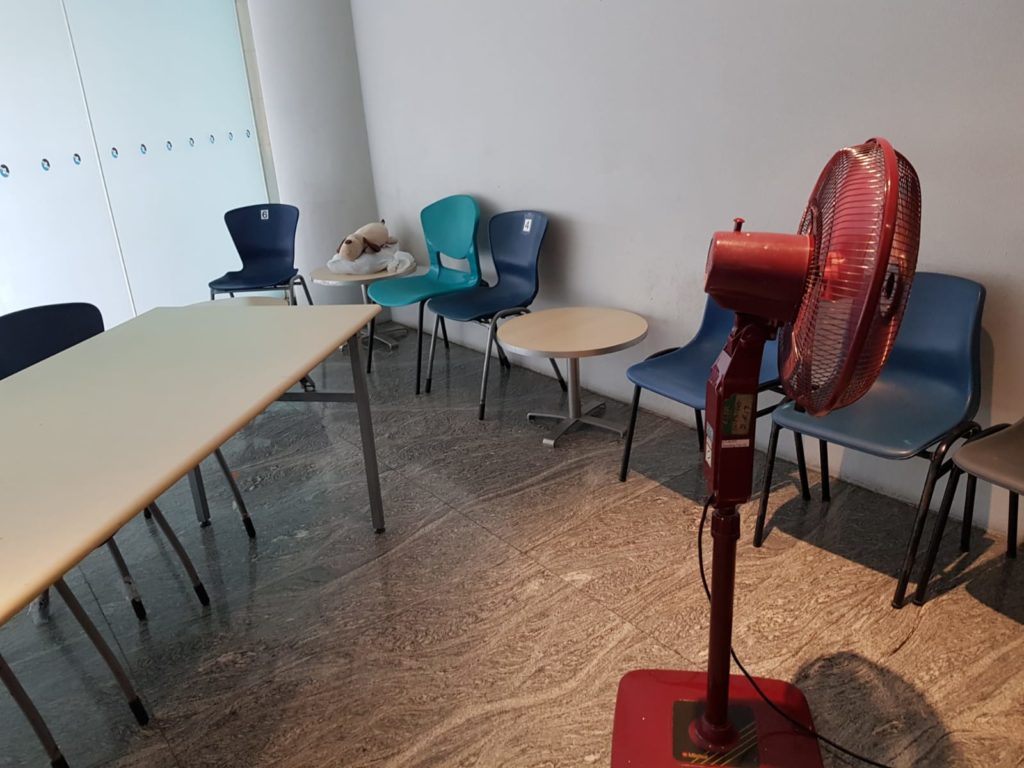
During my visit to Inland Revenue Authority of Singapore Staff Union (IRASSU) a few years back, I was heartened that IRASSU union leaders worked with management to ensure their cleaners and security officers had a proper rest area. Prior to this, the union leaders had noticed that the workers were having their breaks at random areas or secluded corners. Concerned about the welfare of the cleaners and security officers, the union leaders acted and identified an area to be converted into a proper rest area. The union then worked with management and the service providers to provide furniture, and installed fans to ensure the area is well ventilated. I hope others will emulate what IRASSU and their management have done!
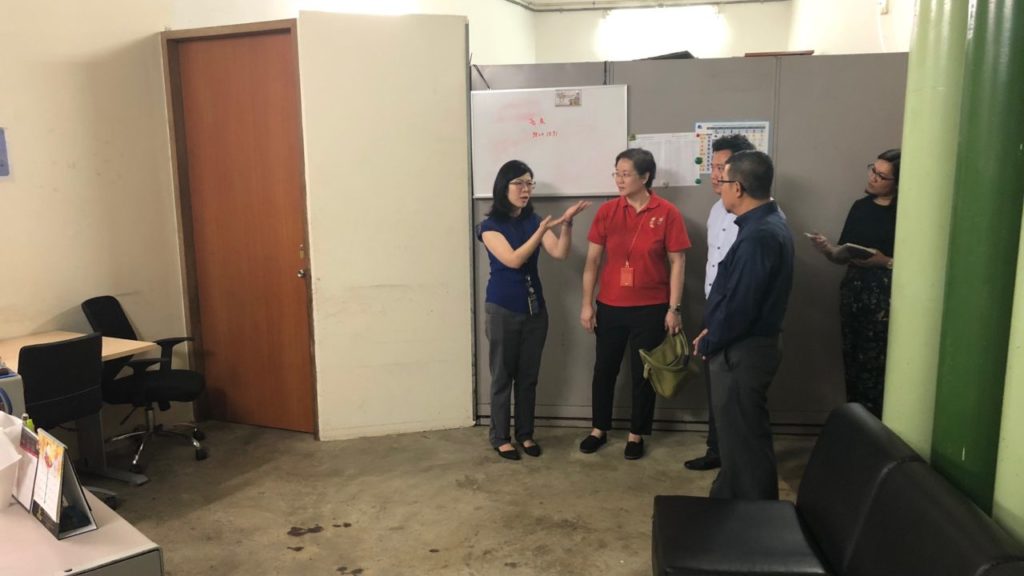
There are many who consciously set out to do the right thing. An excellent example would be JTC’s senior management who believe in taking care of their cleaners, security officers and landscape maintenance workers. During my visit to JTC Corporation in 2018, I was heartened by JTC’s effort to provide proper rest areas for these workers in the building. The rest areas were well ventilated, furnished, equipped with personal lockers, and offered some privacy. In fact, JTC is working to ensure all JTC-owned properties have proper rest areas. And the order came from the TOP!
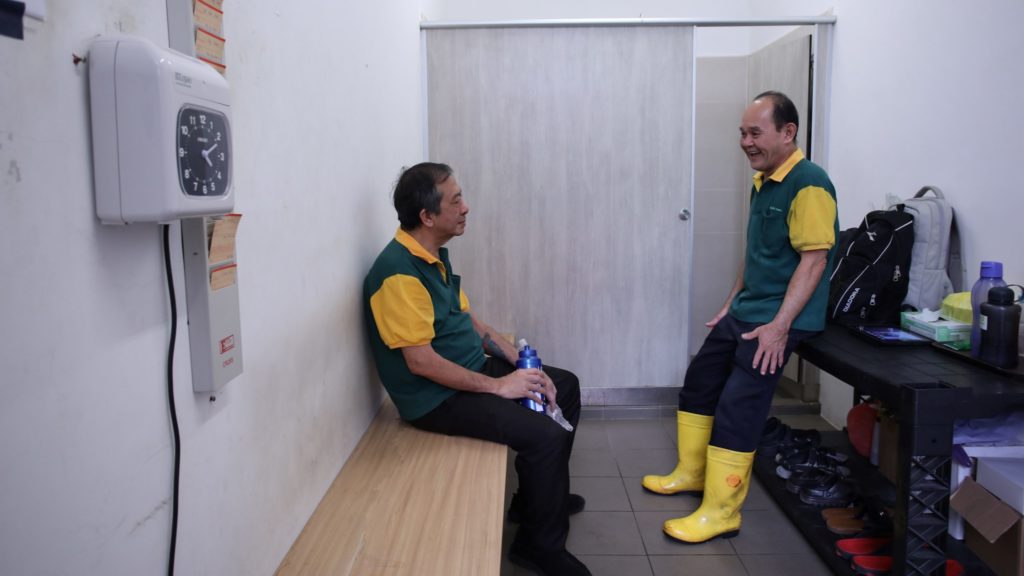
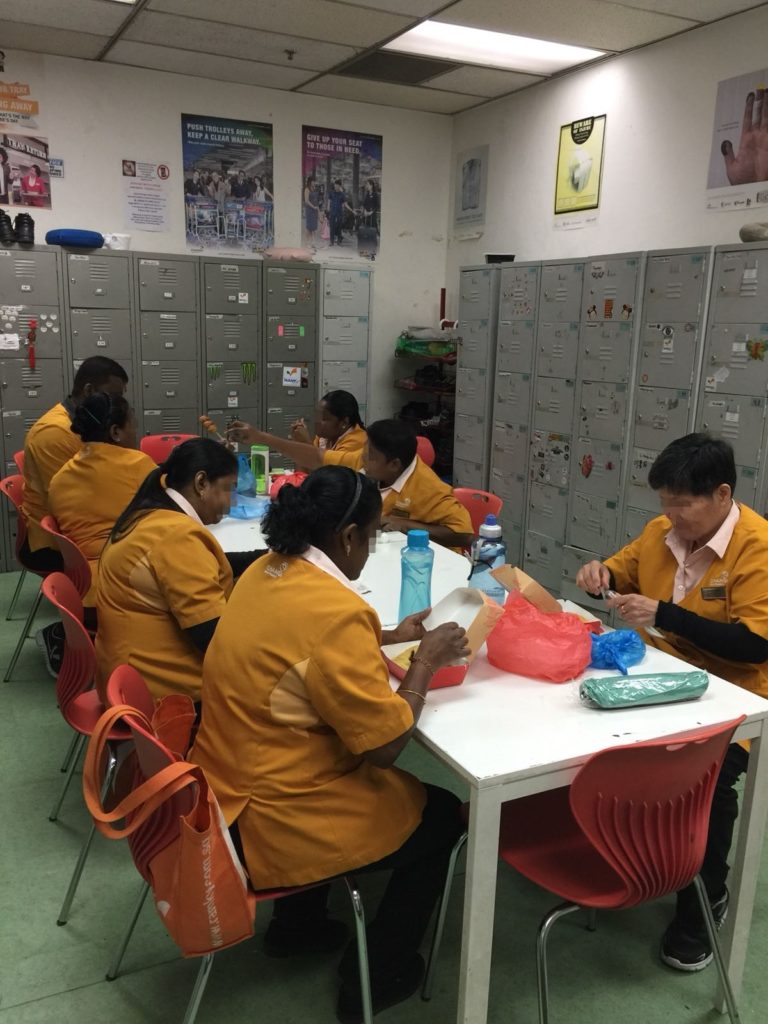
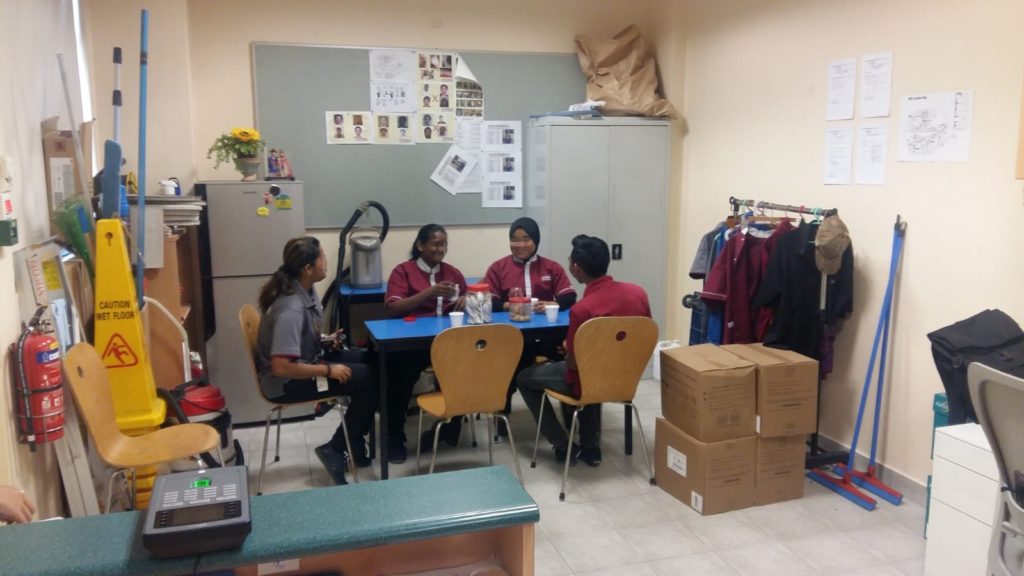
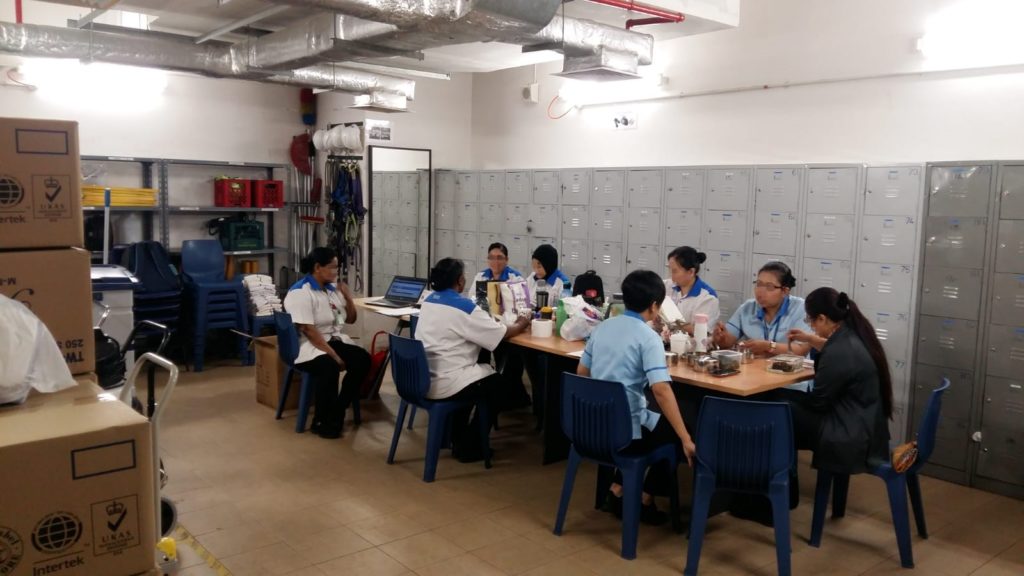
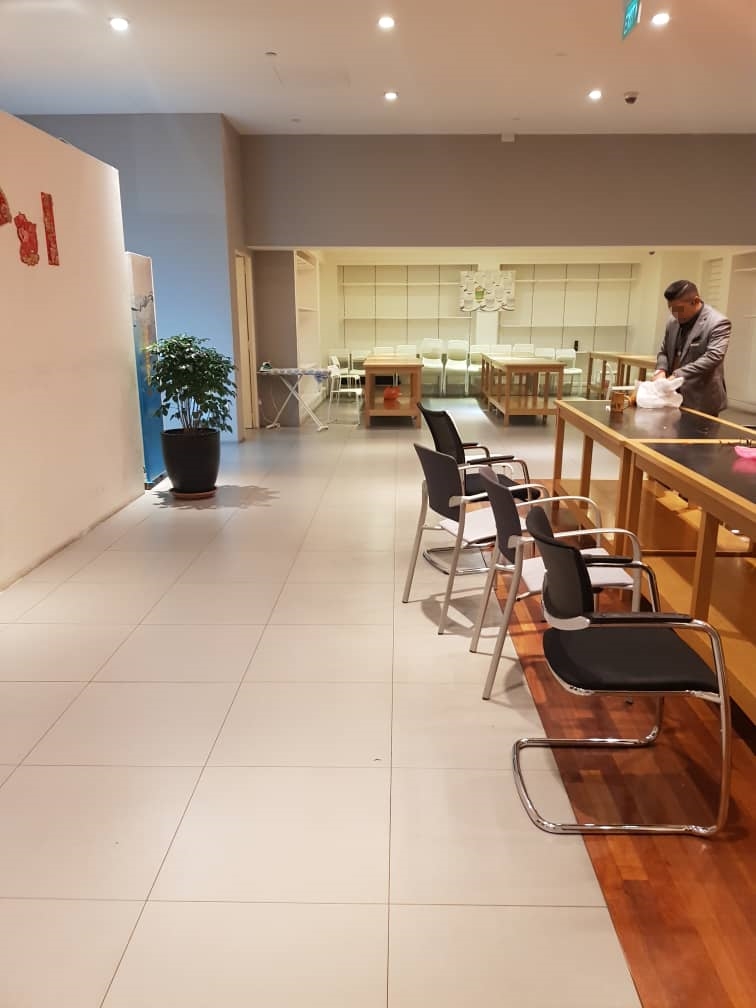
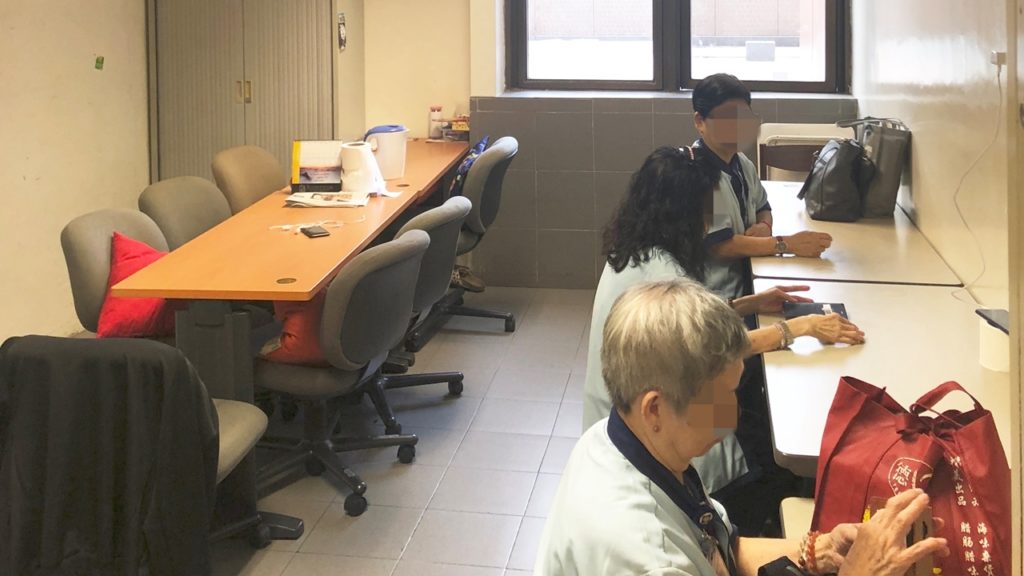
We applaud building owners and service buyers who take the welfare of their outsourced workers to heart. Unfortunately, there are work sites we have visited where the management and building owners ought to be ashamed of themselves.
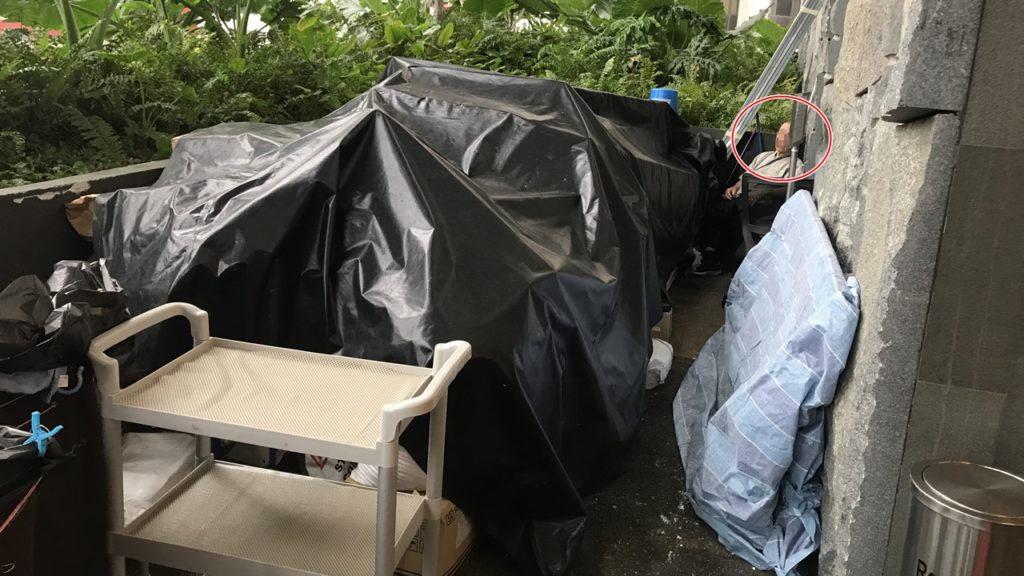
We have been to a building where the cleaners were only assigned a small space carved out from an open garden as their rest area, which doubled-up as an equipment storage area. This makeshift rest cum storage area was not protected from the elements.
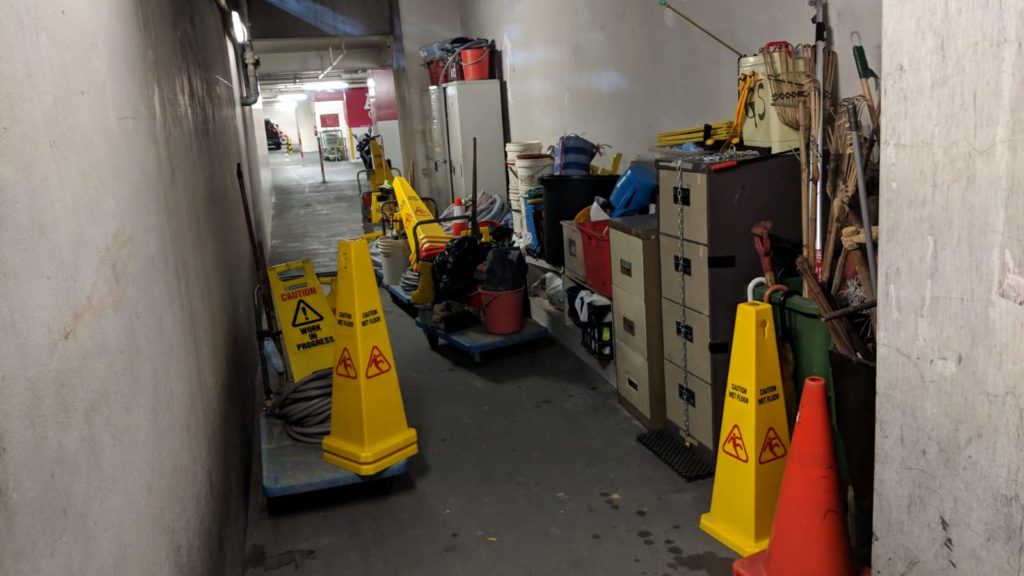
At a major shopping mall in the western part of Singapore, the landscape maintenance workers also do not have an allocated rest area. Instead, they are asked to keep their personal belongings and supplies stored somewhere in the basement carpark, which is accessible to the public. The workers were not allowed to “loiter” around the mall. When the workers requested for a rest area, the building owner responded that there was no available space for one. Workers ended up having to loiter around the nearby MRT station to rest instead.
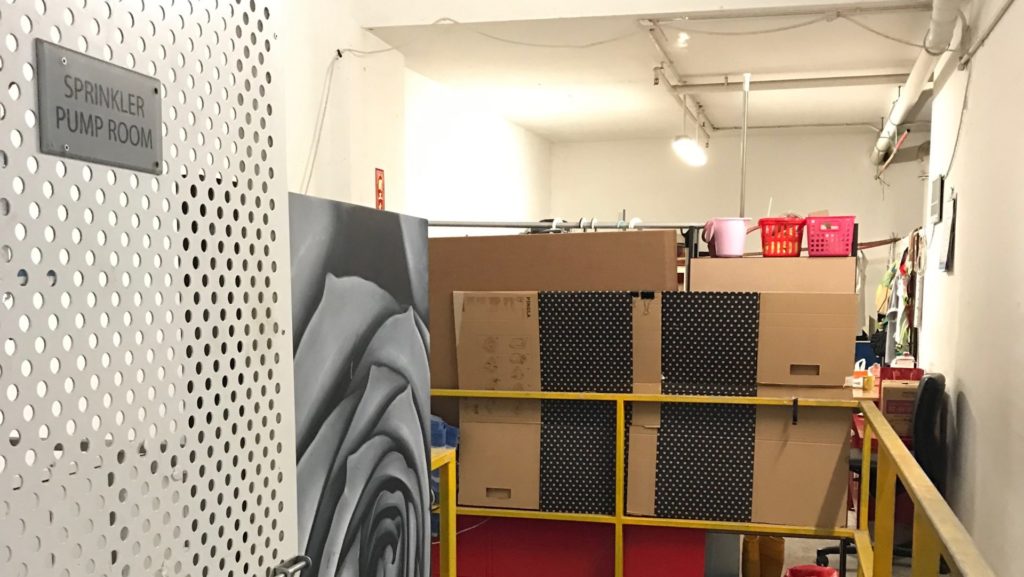
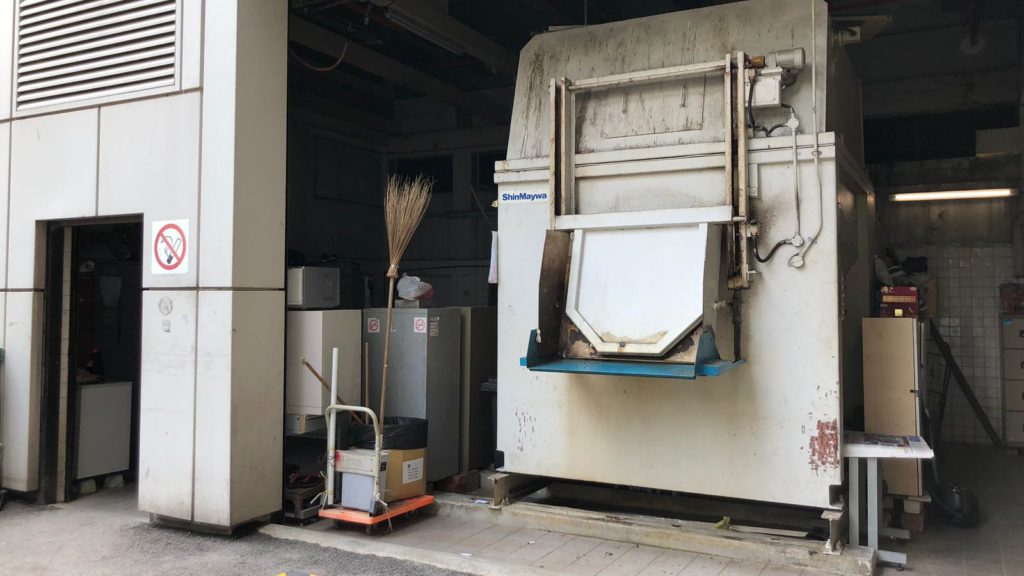
In some condominiums and buildings, the rest areas are either in the bin centre or inside the sprinkler pump room. This is quite a common sight!
What is a proper rest area?
A proper rest area goes beyond just allocating a space within a building for workers. It should be a safe and conducive place for workers to have their breaks, and address some of their basic needs like having a place to store their personal belongings securely. It should also be quiet and offer some privacy (away from public’s eye). Building owners and service buyers should work with service providers to discuss what would suit workers’ needs.
Such rest areas will go a long way in improving the working conditions of outsourced workers. They will no longer have to find secluded corners or staircases to have their breaks. They can have a greater sense of dignity and self-worth knowing that their basic needs are provided for at their work site.
Nudging companies to do the right thing
Property developers must also take such provision into consideration when designing new buildings. However, there are buildings that may not have designated rest areas at service buyers’ premises as these may not have been catered for when the premises were built.
In our engagement with building owners, one common feedback is that they will be required to pay a hefty Development Charge to create rest areas as it constitutes part of Gross Floor Area, or GFA in short. In this aspect, I recently opined that the Urban Redevelopment Authority (URA) can play a critical role in making this happen by waiving the Development Charge if the building owners set aside an area as a designated rest area.
Hence, I hope that URA can review its current policy and include “Designated Rest Area” as an “Item not counted as Gross Floor Area (GFA)”. In so doing, there will be no Development Charge imposed for such rest areas, which do not derive any commercial value. Other examples of “Items not counted as GFA” include pavilions, mechanical and electrical spaces and carparks. If there are no Development Charges imposed on creating designated rest areas, I believe building owners will be more inclined to carve out an area within their premises to take care of their outsourced workers.
We can definitely do more to give our outsourced workers some respect and dignity in doing their work. To lead by example, I hope that all government agencies and related bodies can ensure proper rest areas are provided for their outsourced workers. The unions can work with building management to propose solutions for proper rest areas to be built.
I strongly believe these efforts will nudge companies and building owners to do the right thing.
Let’s help them!
You may not be an employer or building owner, but if you see something at your workplace that is not right, is there something you can do about it?
As a society, we are judged by how we care for the less fortunate. Uplifting the lives of low-wage workers is not the Government’s responsibility alone. It is our collective responsibility to create a better society – one that is inclusive and caring, and one that ensures all workers feel a sense of belonging.
So wherever you are, do what you can, with whatever you have, to help a low-wage worker live with dignity. Check with your company, management or building owner to ensure proper designated rest areas are provided for the outsourced workers at your workplace. I am sure if workers are treated well, they will put in their best efforts to deliver quality service.
Remember, every worker matters!
Spot a rest area that you consider undesirable? Snap a photo and tell us about it!
Email editor@labourbeat.org. Names will be kept confidential.

